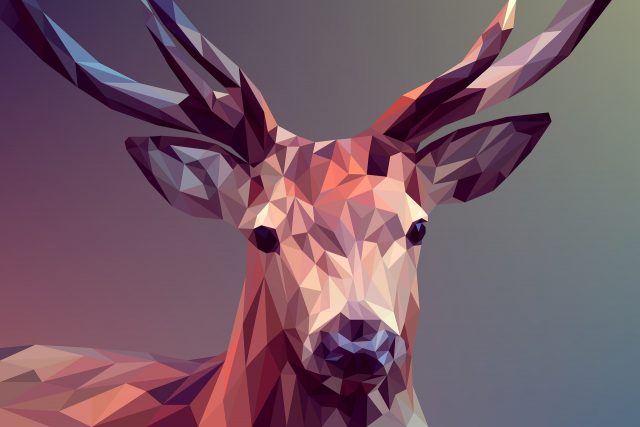NFTs have taken the world by storm. Their very existence has created many new industries. Most notably, NFTs as an art form have been predominant in the web3 space. It has led to the argument if digital tokens can hold value in this regard. There are many arguments, as many critics view NFT art forms as fads with no real value.
Everyone has jumped on the bandwagon, minting their digital collectibles and selling them to users who want to keep a memento.
Skeptics have viewed the often illiquid nature of the industry as a sign that their negative assertions are true.
Skeptics have pointed out that the liquid phases of NFT purchases often coincide with massive liquidity inflows into the cryptocurrency space or price rallies.
Proponents have indicated that the NFT market functions in cycles the same way other markets function. We must note a few points to understand both sides.
Beauty is in The Eyes of the Beholder
Just like a Rembrandt, a Da Vinci, or other famous physical paintings, their owners, fans, and enthusiasts value digital art forms value NFTs. No wonder, therefore, that major globally acclaimed auction houses have entered the web3 space and offered their own NFTs with outstanding results. Last year’s Christie’s auction is an example of this trend in action.
Art takes on the value of those who appreciate it most. What makes this work for NFTs is their digital representation on public blockchains and ledgers. The significant part about this is that the representation of value is publicly viewable, and the uniqueness of the token adds credence to this.
The same works in the physical world where certificates of authenticity and other forms of documentation serve as evidence of an art form.
Consensus Give NFTs Their Value
An extension of the Byzantine Fault Tolerance paradigm that underpins the web3 space is having these NFTs on fault-tolerant blockchains and ledgers. It enhances the credibility presented by the artists who promote their works. In essence, digital copies of the piece may exist. The NFT has an original owner. It is as evidenced by the existence of the ledger itself hosted by other witnesses.
It extends the value of blockchains and public ledgers, which were originally thought of as the third unit of account. Now, digital tokens as NFTs can store hold and create value for artists who want to keep their art in digital form.
Consensus also serves as the final arbiter in the determination of value. It opens up new possibilities never thought possible, even when experts give negative opinions. That doesn’t stop these pieces of art and collectibles from being seen as valuable by the marketplace.
Related: Editorial: Here’s Our NFT Marketplace Review For 2022
The Art World is Undergoing a Digital Revolution
In the same way, the emergence of cryptocurrencies and blockchain technology has forever changed the transfer of value. The art world has undergone a series of changes with the emergence of NFT art forms.
Forward-thinking institutions have joined in and are currently leading the charge of NFT art adoption globally. Naysayers want to get caught up in the arguments that hope to hinder the growth of the NFT space.
The truth is, digital art is rising as tastes and technologies evolve. It is evident with the massive adoption of web3 technologies by millennials and generation Z. Why not the art space as well?
The obdurate nature of these naysayers is clear as they seek to preserve their positions of power as status symbols in a world that has moved beyond just the physical appreciation of beauty.
Physical Art Markets Aren’t Liquid
The physical art world has never been liquid, and it has never meant to be so. Physical art has always been a market for those who have the money and taste. NFTs are simply following the same pattern. It’s a market that is not for everyone.
Those with the liquidity, interest, and taste for NFT art invest and make gains as the new markets increase in value. It has also flattened the barriers to entry. NFT marketplaces provide a means for unknown artists to stand out and shine. Regardless of origin, status, or placement in society. Something impossible in the physical art world.
The World is Now a Witness of Value
Rather than have “experts” who evaluate art forms, the world now is a witness for artists who show their creativity and skill. Valuation comes from the intent of the fans, followers, and enthusiasts who are the ones to dictate what these artists should get paid in the first place.
Gone are the days when restrictions were placed on the identities of those who value art.
Now, art forms get valued by a measure of how popular an art form is with the public, not just within a circle of so-called experts who try to determine what people should own as assets.
It brings us to our next point.
Related:Why Blockchain NFT Games Are Great for the Cryptoverse
NFT Art Ownership is Easy and Cost-Effective
The sheer prohibitive cost of owning physical art forms is one reason the digital art space is growing. Securing an NFT is way easier than securing the Mona Lisa. Once a few basic precautions get taken, nobody can steal an NFT because of the insurmountable security of ledgers and blockchains.
The same can’t get said for physical art forms, which get stolen all the time. NFT art is the future as these benefits provide owners all they need to own these rare collectibles, some of which will continue to go up in value for decades to come.
The ease of ownership provides art aficionados with the means of acquiring art without going through the vetting processes required for owning physical art forms.
Related:Editorial: Why we are Minting Non-Fungible Tokens (NFTs) for E-Crypto News
Web3 Technologies Have Changed How Humanity Operates
The same way email changed how messages get sent globally, web3 technologies have continued in that pattern and changed human activity. Social media platforms came along and took over from emails.
Change is constant. Web3 technologies have shaken things up and taken change to a whole new level. In the art space, NFTs have created novel forms of expression never thought of before as the world shifts towards electronic solutions. The emergence of web3 technologies in the art space is a continuation of using what already exists to create something new.
We expect these transformations to continue as the global adoption of web3 technologies continues. Not only shall we see innovation continue within the art industry, but we shall also see disruptions as they continue to occur within and outside the space.
What’s Next For The NFT Space?
The emergence of new technologies has brought in new types of NFTs. From gaming NFTs to financial NFTs, these new digital asset classes shall define the evolution and growth of the space.
Developers are going to come up with projects that affect new use cases. These use-cases shall be the bulwark of new activities within the space.
Whatever anyone thinks, NFTs are here to stay. Viva la NFT!












